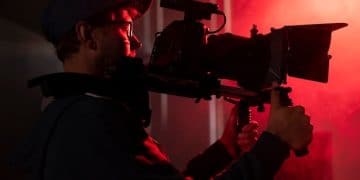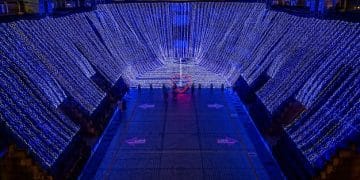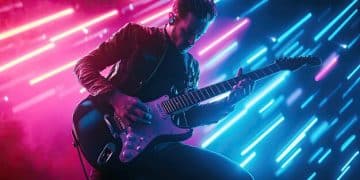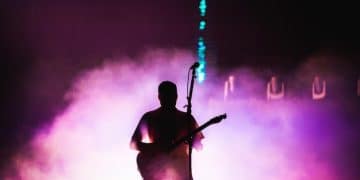Concert Photography Secrets: Capture Pro-Quality Images with Your Phone
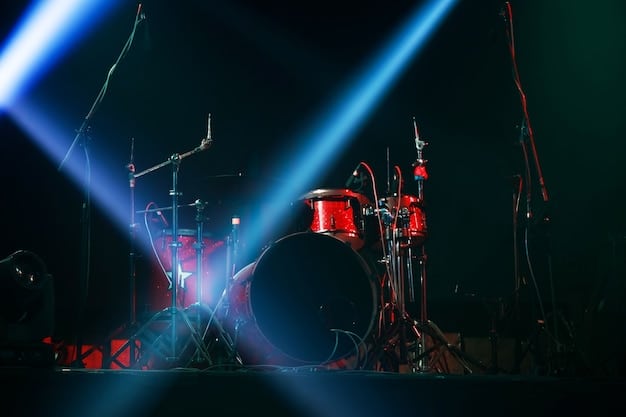
Concert photography can seem daunting, especially if you’re relying on your phone. However, by understanding a few key techniques—such as optimizing camera settings, mastering composition, and leveraging available light—you can capture professional-quality images that truly capture the energy of a live performance, even with your smartphone.
Want to take incredible photos at your next concert? You don’t need expensive equipment. Here are concert photography secrets to get pro-quality images, even with your phone.
Concert Photography Secrets: 7 Tips to Capture Pro-Quality Images (Even with Your Phone)
Taking photos at concerts can be a thrilling experience. Capturing the energy, the lights, and the passion of the performers is something many of us aspire to. While professional photographers often have access to high-end equipment, it’s entirely possible to get amazing shots with just your phone. You might think professional concert photography is only reserved for those with expensive gear, but that’s just not true! With a few insider tips and tricks, you can elevate your concert photography game, even using just your smartphone. Let’s dive into seven key secrets to help you capture pro-quality images at your next concert.
Light is everything in photography, and this is especially true for concert photography. The lighting conditions at concerts can vary dramatically depending on the venue and the performance. Often, you’ll be dealing with low light, bright spotlights, and rapidly changing colors. Understanding how to work with these conditions is crucial for getting great shots.
The first thing to understand is your phone’s limitations. Smartphone cameras have smaller sensors and apertures compared to professional cameras, meaning they let in less light. To compensate for this, your phone will often increase the ISO (sensitivity to light) which can introduce noise or grain into your photos.
Mastering Low Light
When shooting in low light, it’s tempting to crank up the ISO, but try to avoid going too high. Instead, look for ways to stabilize your phone. Use both hands to hold it steady, or better yet, find something to lean against. This will allow you to use a slightly lower ISO and still get a sharp photo.
Another trick is to use the bursts of light that often happen during a performance. Spotlights, strobes, and moments where the stage lights brighten can provide the extra light you need for a better exposure.
Dealing with Bright Lights
Bright spotlights can be just as challenging as low light. They can cause your phone’s camera to overexpose the image, resulting in blown-out highlights and a loss of detail.
To combat this, try tapping on the brightest part of the screen to set the exposure point there. This will tell your phone to prioritize that area, preventing it from becoming overexposed. You can also use the exposure compensation feature on your phone to manually reduce the exposure.
Here are some key points to remember about working with light at concerts:
* Understand your phone’s limitations in low light.
* Stabilize your phone to avoid blurriness.
* Use bursts of light to your advantage.
* Tap to set the exposure point when dealing with bright lights.
Working with light is an ongoing learning process. The more you practice, the better you’ll become at anticipating and adapting to different lighting situations. Understanding how light interacts with your phone’s camera is truly one of the top concert photography secrets.
In conclusion, mastering lighting nuances at concerts involves understanding your phone’s capabilities, stabilizing your device, and cleverly using available light bursts. By knowing how to manage both low and bright light scenarios, you’ll significantly improve the quality of your concert photos.
Framing a shot and arranging the elements within the image is just as important as technical settings. Composition can make or break a photo, transforming a simple snapshot into a visually compelling image.
You are at a concert, so the main subject will likely be the band or artist, but think about where you want to position them within the frame. One common technique is the rule of thirds. Imagine dividing your screen into nine equal parts with two horizontal and two vertical lines. Placing key elements along these lines or at their intersections can create a more balanced and interesting composition.
Experiment with Angles
Don’t be afraid to move around and experiment with different angles. Try shooting from a low angle to make the performers look larger and more imposing, or from a high angle to capture the energy of the crowd.
Look for interesting lines, shapes, and patterns within the venue. Architectural details, lighting rigs, and even the crowd itself can add visual interest to your photos. Use these elements to guide the viewer’s eye and create a sense of depth.
Capturing the Moment
Concerts are full of fleeting moments that are worth capturing. Be ready to snap a photo when the lead singer hits a high note, when the guitarist shreds a solo, or when the crowd erupts in applause. Anticipate these moments and be prepared to capture them.
To improve your composition skills, keep these tips in mind:
* Apply the rule of thirds for balanced compositions.
* Experiment with different angles to find unique perspectives.
* Look for interesting lines, shapes, and patterns.
* Anticipate and capture key moments during the performance.
Good composition can turn a simple photograph into a work of art. By paying attention to how you arrange the elements within your frame, you can create more visually appealing and engaging concert photos. So, take advantage of this concert photography secret.
Effective composition goes beyond merely pointing and shooting; it involves thoughtfully arranging elements within the frame to guide the viewer’s eye and evoke emotions. By experimenting with angles, capturing fleeting moments, and applying the rule of thirds, you can elevate your concert photos from simple snapshots to captivating works of art.
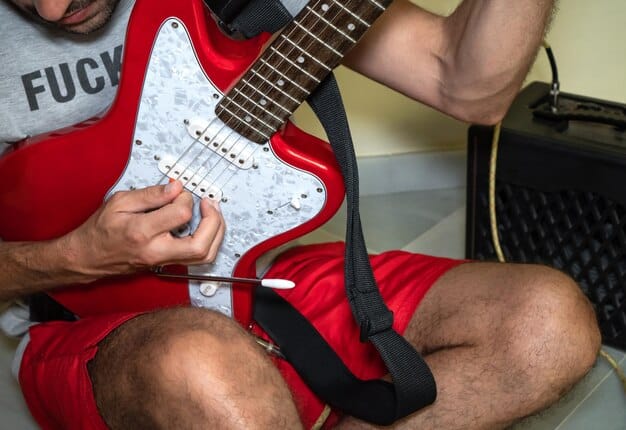
Optimize your phone’s camera settings. Modern smartphones offer a range of settings that can significantly impact the quality of your concert photos. While shooting in auto mode can be convenient, taking control of certain settings can help you achieve better results.
One of the most important settings to adjust is the exposure. Most phones allow you to manually adjust the exposure by tapping on the screen and sliding your finger up or down. This can be helpful in situations where the lighting is uneven, or when you want to highlight a specific part of the scene.
Use Burst Mode
Burst mode, which allows you to take a rapid sequence of photos by holding down the shutter button, can be invaluable for capturing fast-moving action. This increases your chances of getting at least one sharp, well-timed shot.
HDR (High Dynamic Range) mode combines multiple exposures into a single image, preserving detail in both the bright and dark areas of the scene. This can be particularly useful in concerts where there is a wide range of lighting conditions.
Shooting RAW
Another setting to consider is shooting in RAW format. RAW files contain more information than JPEG files, giving you more flexibility when editing your photos. However, RAW files also take up more storage space, so weigh the pros and cons before enabling this setting.
Here’s a list of settings you might want to experiment with:
* Exposure compensation
* Burst Mode
* HDR Mode
* RAW format
Adjusting your camera settings can give you more control over the final result. By experimenting with different settings, you can fine-tune your phone’s camera to get the best possible image quality in any situation. Always rely on these concert photography secrets.
Adjusting your phone’s camera settings, such as manual exposure control and HDR mode, and utilizing burst mode strategically, can provide greater control and flexibility in capturing high-quality concert photos. These adjustments help you fine-tune your phone’s camera and adapt to varied lighting conditions, ensuring you get the best possible result.
Even if you’re just using your phone, there are extra lenses available that dramatically improve the quality of your shots. These lenses can easily clip onto your phone, and improve results dramatically.
A wide-angle lens is excellent for capturing the whole band and the entire scene in front of you. This will have the additional benefit of brightening the shots quite a lot, since you’ll be taking in more light from a broader scene.
A zoom lens is perfect for getting close without actually getting close! This adds real professional flair to your shots. You can focus in on the emotions of band members, or isolate details.
Extra phone stabilizer attachments are also available. As mentioned above, the slightest wobble will make a shot unsalvageable without a professional camera. Using a stabilizer will therefore enhance your shots dramatically, without costing too much at all.
Lenses don’t have to cost a lot. Great brands are available on Amazon for less than $100 dollars, and a stabilizer won’t cost more than about $30. Adding the gear to your phone is what separates concert pics from phone pics, making this one of our top concert photography secrets.
Using external lenses can unlock creative possibilities and take some pressure for perfection from the base equipment, while a stabilizer can add a professional touch to your setup. Keep that in mind while you’re taking photos!
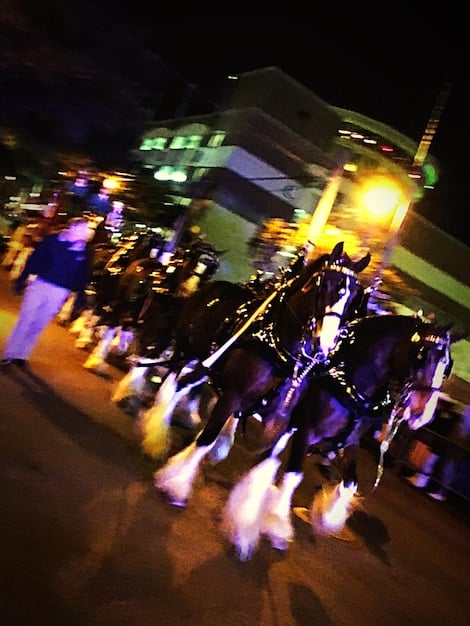
Capturing the energy and atmosphere of a concert is just as important as getting technically perfect photos. While sharpness and detail are important, a photo that conveys the emotion of the event can be even more impactful.
One of the best ways to capture the atmosphere is to focus on the crowd. Their expressions, their movements, and their interactions can tell a compelling story about the concert experience. Look for moments of excitement, joy, and connection.
Focus on Detail
Pay attention to the details that make the concert unique. The stage setup, the lighting effects, the costumes – these elements can add a lot of visual interest to your photos. Capture them in a way that conveys their significance.
Don’t forget to capture the overall vibe of the concert. Experiment with different angles and perspectives to convey the energy and excitement of the event. Use wide shots to show the scale of the crowd and close-ups to capture the emotions of individual fans.
Storytelling is Key
To capture the atmosphere effectively, consider these tips:
* Focus on the crowd’s expressions and movements.
* Capture the unique details of the stage and lighting.
* Experiment with different angles and perspectives.
* Focus on storytelling
Capturing the atmosphere of a concert can be challenging, but it’s also incredibly rewarding. Try to use these concert photography secrets to capture the energy and emotion of the event.
Capturing the energy and atmosphere of a concert goes beyond technical precision; it involves focusing on the crowd’s emotions, capturing unique details of the stage, and experimenting with angles to convey the overall vibe of the event, transforming photos into compelling stories.
Editing is essential for bringing out the best in your concert photos. Even if you nail the composition and exposure, a little bit of post-processing can take your images to the next level.
There are many photo editing apps available for smartphones, both free and paid. Some popular options include Adobe Lightroom Mobile, Snapseed, and VSCO. These apps offer a range of tools for adjusting exposure, contrast, color, and sharpness.
Basic Edits
Start with basic adjustments like exposure and contrast. If your photo is too dark, increase the exposure. If it looks flat, add some contrast. Be careful not to overdo it, though. The goal is to enhance the photo, not to make it look artificial.
Color correction can also make a big difference. Adjust the white balance to get rid of any unwanted color casts. You can also tweak the saturation and vibrance to make the colors pop.
Sharpness and Noise Reduction
Sharpening can make your photos look crisper and more detailed. Use it sparingly, though, as too much sharpening can create unwanted artifacts. If you shot in low light, you may also need to reduce noise. Most editing apps have a noise reduction tool that can help smooth out graininess.
Here are some tips for editing your concert photos:
* Start with basic adjustments like exposure and contrast.
* Correct the white balance to eliminate color casts.
* Adjust saturation and vibrance to enhance colors.
* Sharpen your photos to improve detail.
* Use noise reduction to smooth out graininess.
Editing is a personal process, so experiment and find what works best for you. With a little bit of practice, you can transform your concert photos into stunning works of art. Use these concert photography secrets and edit strategically.
Effective editing refines concert photos by enhancing exposure, contrast, and colors while judiciously applying sharpness and noise reduction techniques, transforming images into visually appealing masterpieces.
No matter what you do, and no matter how great your technique, ultimately concerts are about getting close to the music you love. Be sure you’re actually watching the show for most of the gig, or you’ll have missed the point.
Taking a few good photos is great, but remember to enjoy the event as a participant. The real world experience is more important than the virtual one. You’ll treasure the memories once the event is over!
If you focus 100% on capturing video, you won’t remember the actual show – you’ll only remember trying to get good videos. It’s important to balance memory with photo taking. Once you have a few good shots, be happy to rest on your laurels!
Having fun and engaging with the music should never be secondary! Prioritize the live experience – that’s concert photography secret number 7.
In conclusion, the ultimate secret to concert photography is to balance your desire to capture stunning photos with the importance of fully immersing yourself in the live experience. By savoring the music, cherishing the event, and engaging with the performance, you’ll create lasting memories that transcend any photograph.
| Key Point | Brief Description |
|---|---|
| 💡 Lighting Mastery | Understand how low and bright lights affect your phone’s camera and adapt settings accordingly. |
| 📸 Composition Tricks | Apply the rule of thirds, experiment with angles, and capture unique moments to enhance visual appeal. |
| 📱 Optimize Settings | Adjust exposure, HDR mode, and use burst mode to control image quality in varied conditions. |
| ⭐ Enjoy the Show! | Balance photo-taking with fully experiencing the concert for lasting memories. |
Concert Photography with a Phone
▼
Stabilize your phone by using both hands or leaning against something. Avoid cranking up the ISO too high and look for bursts of light during the performance to capture better exposure.
▼
Tap on the brightest part of the screen to set the exposure point there. You can also use the exposure compensation feature on your phone to manually reduce the exposure for better results.
▼
Yes, absolutely! Wide-angle lenses capture more light and the entire scene, while zoom lenses allow for close-ups without getting close, adding professional flair to your shots.
▼
Popular options include Adobe Lightroom Mobile, Snapseed, and VSCO. These apps offer tools for adjusting exposure, contrast, color, and sharpness to enhance your photos.
▼
The real world experience is more important than the virtual one. Prioritize the live experience – balance your desire to capture photos with the importance of fully immersing yourself in the event.
Conclusion
In conclusion, capturing pro-quality concert photos with your phone is achievable by mastering light, composition, and camera settings. Don’t forget to engage in the concert itself – the memories and feeling is as important as any number of photos you take.
